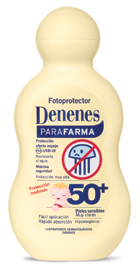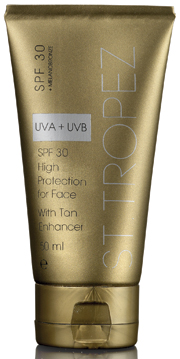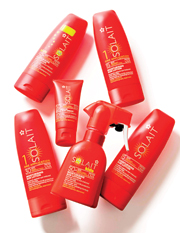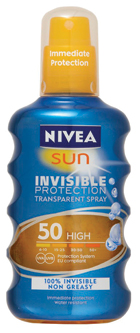Most consumers are reasonably well aware of the risks connected with sun exposure and sun care manufacturers are getting more creative and developing products boasting multifunctional benefits. Nadia Di Martino reports
In August 2010 while the US was dealing with a sluggish economy and fears of a double-dip recession overcast the global markets, clouds also made their appearance, with the UK for example apparently witnessing the coolest August since 1993. These constraints make last year’s growth in the sun care category even more impressive. According to Mintel, savvy consumers were unwilling to trade in safety and continued to invest in sun care and sun protection. In Europe, France and Italy represented the largest markets, with estimated sales for 2010 standing at €389m and €374m respectively, according to the research analyst. In the UK total sales of sun care rose an estimated 4% to £284m. In Germany sales stood at around €239m while Spain recorded more modest results totalling €148m sales. In the US the sun protection and sunless tanning market was worth $701m and was oriented towards ‘ultra’ and ‘sport’ protection that drove an increase of $77m from 2009 to 2010.
Despite good results overall, the recession hindered sales of aftersun and self-tan products. Many consumers found aftersun products superfluous and instead just carried their regular skin care treatments to their holiday destinations, leaving the category down 3% in the UK.
Globally, sunscreen and sunblock remained the most developed sub-segments, which shows increased awareness about skin cancer and skin ageing is further improving consumer attitudes towards tanning. In the last few years, education in this area has been widely promoted through cooperation between manufacturers and cancer organisations and it appears that safety messages are having an impact.
“Educating consumers is important as there are factors to be aware of such as sun protection factors, skin types, ensuring the right amount of product is used and then reapplied. This goes hand in hand with producing products that people want to use. If the formulation and format are well received by consumers, they are much more likely to use and then reapply, increasing the chances of adequate protection,” explains Richard Duplock, brand manager, Nivea Sun.
| Table 1: Global sun care market by category, 2010 (US$M)* | ||
| Category | 2009 | 2010 |
| Sun care total | 7622.37 | 8182.31 |
| Aftersun | 600.59 | 617.68 |
| Self-tanning | 538.50 | 532.26 |
| Sun protection | 6438.28/td> | 7032.37 |
| *Preliminary data Source: Euromonitor International | ||
Last year Cancer Research UK teamed up with Superdrug to set up the Safe in the Sun Campaign which provides consumers with in-store educational information and free samples of sun care products to promote sun protection.
In the US drugstore chain Rite Aid teamed up with Aveeno for The Skin Cancer Foundation’s Road to Healthy Skin Tour while Neutrogena partnered with the American Society for Dermatologic Surgery to tell consumers to ‘Choose Skin Health’.
It is worth highlighting that sun care consumers are more often women as they are more likely to place a higher premium on protecting skin, particularly those aged 35-44.
“Women’s magazines have done a great job of promoting sun awareness in recent years, however there is not really an equivalent source of information for men, and this may partly explain why men seem to be less likely to use sun protection,” comments Nina Goad, communications manager for the British Association of Dermatologists (BAD). “Women are also more aware of the skin ageing effects of the sun and many women use sunscreen as a means of keeping wrinkles at bay. For men, this seems to be less of a concern and they often regard sunscreens as a beauty product.”
In 2010, as part of its Sun Awareness Campaign in the UK, BAD devised a new skin cancer campaign called Ultimate Skincare, which borrows the terminology and imagery of the beauty industry to reach women. To create a buzz and draw consumers’ attention to the importance of early detection of skin cancer, BAD designed a jar that resembles a high-end beauty cream but in fact contains a mirror with instructions on how to go about checking skin.
Spray factors on the up
According to a survey of 1,000 British women, 30% feel sticky and greasy at the end of the day because of the build-up of sun protection products; 30% avoid factors above SPF30 because they take too long to rub in and 34% look for a combination of looking stylish and having hydrated skin in the sun. With this in mind, Piz Buin launched the new collection In Sun Ultra Light Sun Spray. SPC spoke to Aurelie-Anne Gaillard, Johnson & Johnson research and development franchise leader about the brand’s achievements
“There has been quite a lot of communication in recent years around the danger of sun exposure, so I think consumers are now more aware of them than before and in the UK Piz Buin has seen growth in higher SPF sun protection – SPF30-49 was up 8% and SPF50 was up by 10%. In 2010 the purchase frequency of sun care products was 1.3 times per year.
“The major opportunity in the market now is to increase category penetration, which is currently 28% in the UK. This can be done by increasing the consumer’s sun care awareness.
“We use raw materials, and particularly sun filters, that are all authorised for use in cosmetics by the European Commission, which means that their safety has been reviewed and validated by experts at the European level. Moreover, all our finished products go through a strict safety testing procedure during their development to ensure their safety.
“In parallel, our communication also educates consumers and reinforces
the message around sun protection by making the link clear between enjoying the sun safely and applying sun protection.
“To give you an idea of Piz Buin’s success, the UK is a good example. The total sun protection category here is impacted by British weather peaks plus summer holidaying trends, with sales peaking between May and July.
“In the UK market Piz Buin has seen steady growth continue with the sun preparation market growing by 4.2% to £218m. Meanwhile the sun protection market grew
4% to £143m. In terms of format growth, SPF factors 30-49 grew 8% and SPF50 10%.
“We strive to create products that consumers will love to use without any compromise on efficacy.”
Added benefits
Consumers have become more demanding. Gone are the days when sun protection simply meant protection from sunburn. Manufacturers have responded to consumers’ needs by tapping into a variety of niche segments. In the US especially, where the sun protection and sunless tanning segments have increased by nearly 50% since 2005, manufacturers have focused on high protection, including SPF100+. Further innovation has come from new ingredients, high-tech products and environmentally friendly products. Spanish brand Denenes has had success in the US with its sunscreen Parafarma Solar SPF50+, which is claimed to protect against jellyfish stings. New possibilities for product development are also being developed for black and Hispanic skin concerns.

Additional benefits such as this anti-jelly fish sting formula from Denenes are popular developments
According to senior European beauty analyst at Mintel, Vivienne Rudd: “While UV protection is naturally the most important component of sun protection products, it would be hard to get consumers to use them regularly if they didn’t have cosmetic properties such as a pleasant texture and fragrance. However consumers are now looking for even more than this.” Rudd points to a new generation of sun protection products that also offer antioxidant, moisturising and nourishing ingredients. “Nivea, Ambre Solaire and Soltan are successful especially because they have managed to convey the dual message of effective protection and skin care. Other brands such as La Roche-Posay, Avène and RoC have more of a pharmacy image and play well with consumers who are looking for a sense of additional reassurance, particularly if they have sensitive skin.”
The crossover between sun protection and skin care has become a valuable marketing tool for manufacturers. Mintel estimates that 20% of all sun care launches in the prestige sector contained skin caring claims, with brands such as LVMH’s Dior and L’Oréal’s Lancôme basing their lines on protection against premature signs of ageing due to sun exposure.
Half of sunscreen launches in 2010 featured moisturising and hydrating claims, a third were fortified with vitamins and minerals supporting the skin and a third were formulated for sensitive skin, according to Mintel.
St Tropez, recently bought by soap manufacturer PZ Cussons, entered the sun protection market with the launch of its first high-performance sun care line with skin care claims. The five sku line – two body products, two face products and an aftersun feature the ingredient Melanobronze, derived from the berries of monk’s pepper and said to stimulate melanin production. The brand deliberately chose high SPFs for the products (SPF20 is the minimum) for enhanced protection while muru muru butter, vitamin E and raspberry oil help moisturise and soothe.

The first foray in to sun care by St Tropez blends skin care benefits with high level sun protection
Sally Lewis, head of product development comments: “The brand thought it was logical and natural to step into sun protection. We’ve spent three years in the laboratories developing our new SPF range and have worked with skin cancer charities included Sckin to ensure we communicate the correct message to the public.”
Swiss brand Juvena launched the Prevent & Optimize Top Protection SPF30, described as an anti-ageing sun care product with thorough UV protection. According to the company its light formula containing ultra-fine gold particles leaves the skin feeling soft and for this reason it can be used either alone as a day cream or on top of the usual face care product. “The fact that our products are mainly anti-ageing creams with the extra benefit of sun protection means they have been less hit by the recession,” says international brand director Inga Risop.
According to Juvena there are many opportunities for more expensive products to succeed as they deliver additional benefits to sun care consumers. Risop continues: “When it comes to sun care the mass market plays a major role as it offers good price value for consumers. But if a consumer needs special advice or is searching for an extraordinary combination of sun protection with anti-ageing features, you’d better search in the selective channels. One of the challenges is to build the sun care segment in the selective channel further and educate consumers about the differences vs the mass market.”
Hawaiian Tropic has marketed its new Shimmer Effect sun care range under the banner Skin Beauty. The three products – an SPF20 and SPF40 lotion and an aftersun lotion – contain mica pigments said to enhance and highlight skin tone, as well as a blend of antioxidants to protect skin against free radical damage.
The other side of the coin is that most facial moisturisers and anti-ageing products today incorporate an SPF of up to 15, with some going as high as 20 or 25; for instance Boots has recently relaunched its Protect & Perfect day creams with SPF15.
Meanwhile colour cosmetics have also become increasingly involved, with foundations, face powders and lip products featuring high SPFs. Mineral make-up is even more competitive as products often contain titanium dioxide, a very common UV filter.
| Table 2: Global sun care market value, 2010 (US$M)* | ||
| Category | 2009 | 2010 |
| Australia | 140.96 | 149.71 |
| US | 1390.51 | 1509.33 |
| France | 435.54 | 444.92 |
| Germany | 204.83 | 197.97 |
| Italy | 482.74 | 477.33 |
| Spain | 523.05 | 530.12 |
| UK | 442.42 | 455.29 |
| *Preliminary data Source: Euromonitor International | ||
| Table 3: UK Retail Value Sun care sales by SPF, 2008-09, £m | |||
| 2009 | 2010* | % | |
| 13 | 9 | -50.0 | |
| SPF11-15 | 25 | 22 | -12.0 |
| SPF15-20 | 39 | 44 | 25.7 |
| SPF30-50 | 65 | 72 | 9.1 |
| SPF50+ | 66 | 73 | 43.1 |
| Total | 208 | 220 | 12.8 |
| *Estimated Source: Mintel | |||
However this can all be confusing for consumers. BAD says if SPF used in moisturisers isn’t tested to the same standard as sunscreens these formulas are less likely to be rub-resistant and water-resistant and most importantly they are likely to be applied a lot more thinly than sunscreens. “They are unlikely to offer the same level of protection. A moisturiser with an SPF will protect against small amounts of UV exposure, but sunscreen remains better suited for longer, more deliberate UV exposure. Consumers must also be aware that moisturisers containing an SPF may not contain any UVA protection,” says Kimberley Carter, campaigns PR officer at BAD.
SkinCeuticals focused on mineral sunscreens and is launching Sheer Mineral UV Defense SPF50 for all skin types. The formulation uses mineral filters rather than chemical ones. It also features Artemia salina, plankton extract claimed to increase skin’s natural defence to UV and heat stress. The lightweight formulation provides a mattifying, transparent finish.

Mass market brands such as Superdrug Solait are attracting consumers with price promotions, while ModelCo claims its Tan in a Can was a world first
Meanwhile the mass market is finding its own differentiation, offering affordable sun protection lines with added skin care properties.
This year Superdrug own brand Solait is gearing up launching the ‘Buy 1 get 2 Free’ promotion in spring in Superdrug stores in the UK and is also offering a flat pricing policy on sun care so that consumers can buy any SPF at the same cost. “We have teamed up with Cancer Research UK and they recommend using SPF15 as a minimum,” says Martin Crisp, head of pharmacy for Superdrug. “The same-price-policy that Superdrug has implemented is meant to encourage consumers to use the correct SPF. Many people underestimate the power of the sun in the UK and assume they can get away with an SPF15 protection which is often not enough.” The Solait Anti-ageing Facial Suncream SPF50+ is claimed to offer the highest protection and to protect skin better than any beautifying cream at a fraction of the price: it costs £5.99 for a 75ml pot.
Boots has repackaged its Soltan range with improved formulations. The Soltan Once collection has also been enhanced with a spray format. And a new aftersun product incorporates insect repellent.

Direct seller Avon is also following the anti-ageing/sun care trend in launching its Anew Solar Advance line. The result of ten years’ research, the line includes Sunscreen Face Lotion SPF45, Sunscreen Body Lotion SPF30 and Sunscreen Body Mist SPF28. All products feature RepairShield Technology designed to protect skin by stimulating its natural antioxidant defence system to fight free radicals and repair skin from sun damage by activating its natural repair process.
What is revolutionary, according to the company, is that in vitro tests show that RepairShield Technology repairs 50% of skin cell damage in 24 hours.
Avon researchers examined new ways to enhance the repair of UV induced damage and discovered a blend of phytochemicals and extracts said to be ideal. These ingredients were also found to help stimulate the skin’s own antioxidant enzymes thus promoting cell recovery. “Our patented RepairShield Technology is a great example of how we have applied our extensive anti-ageing expertise with profound understanding of sun care to deliver an effective product to help protect against and reverse sun induced damage to the skin,” comments Anthony Gonzales, senior manager, Avon global research and development.
Do it yourself
The self-tan sector remains muddled with a plethora of rather unclear product launches that have tended to confuse consumers. As a result many at some point have given up. Others have gone for gradual tanning body lotions and some real tan aficionados have unfortunately returned to the sunbed, so sales of self-tan products have suffered.
“The tanning category is now very competitive with so many brands expanding their range each season,” explains Shelley Barretts, founder of Australian beauty brand ModelCo. “We launched the product Tan in a Can years ago – that was a world first. It created a whole beauty category and changed the way women self-tanned for ever. The main challenge now is that our competitors copy many of our first to market product creations.” But it’s not all gloom for the category. “Creating a fake tan allows women to have the option to have a flawless tan without ever having to expose to the sun and I consider this to be very safe,” adds Barretts.
Manufacturers are bringing out new self-tan brands including Makebelieve and recently Sinless Sun (United Beauty), a collection of seven new products including self-tanning mists, crèmes, body moisturiser and body scrub.
St Tropez is exploring the natural avenue, launching Naturals, a collection of self-tanning products claimed to be ideal for sensitive skin that feature Vegetan, a 100% naturally derived equivalent to DHA, the active ingredient in sunless or self-tanning skin care products. The line is Ecocert approved and is targeted to consumers who long for a natural self-tanning option and added skin care benefits. Products feature avocado butter said to soothe and moisturise skin while promoting a radiant complexion. St Tropez Naturals features Radiance Self Tan for Face, Self Tan Milk and Self Tan Lotion.
Lighten up
Lightweight is at the centre of many recent launches. Nivea Sun, which according to data from AC Neilson had the world’s largest market share value in 2009, has introduced the new Invisible Protection in SPF 50; the range launched in SPF 10, 20 and 30 in 2009. The transparent formulation promises a non-greasy texture.

Light lotions and spray formats are increasingly popular options for sun protection products
In the US, Neutrogena focused on ease of application with the launch of Wet Skin Sunblock Spray, designed to be sprayed onto wet skin for sun protection. The formula contains Helioplex, which cuts through water on the skin to form a protetective barrier, says the company.
And Biotherm’s new Lait Solaire range claims to combine the light texture and moistursing properties of the brand’s existing Lait Corporel body lotion with broad-spectrum sun protection.
“Demystifying the category and ensuring consumers understand how to use the products correctly offers the biggest challenge and opportunity for the category,” believes Duplock. “Research shows that consumers often don't apply enough product or reapply frequently enough which can reduce the level of protection.”
According to Mike Brown, senior scientist/advisor at Boots, manufacturers are aware they have to take part of the responsibility for this. “Heavy greasy formulations have, for many years, been a deterrent for many,” he says. “Lighter feeling formulations are proving very popular, however to attain high factors with high UV protection is technically very difficult. Boots continues to deliver on its promise and offers maximum UVB and UVA protection on even its sheerest formulations.”
While not burning remains the main priority, manufacturers are aware their task is to develop multidimensional products that will interest consumers beyond the practicalities. If the industry keeps focused on education and practical formats and adds a point of difference, a globally winning category that has defied recession and bad weather can only shine brighter in the future.
